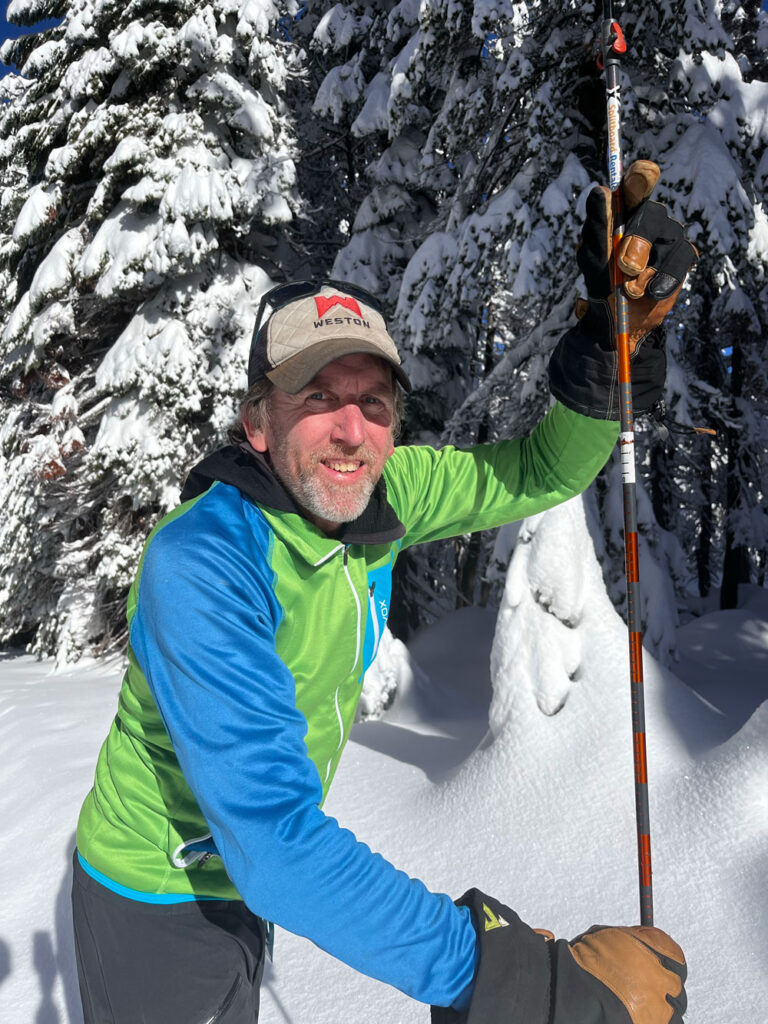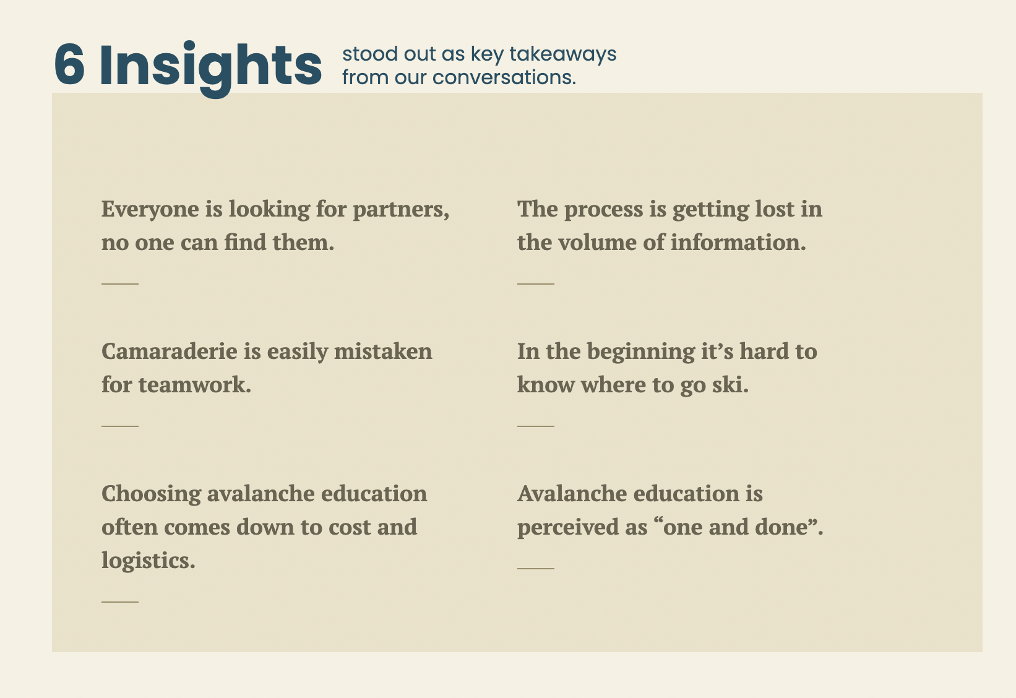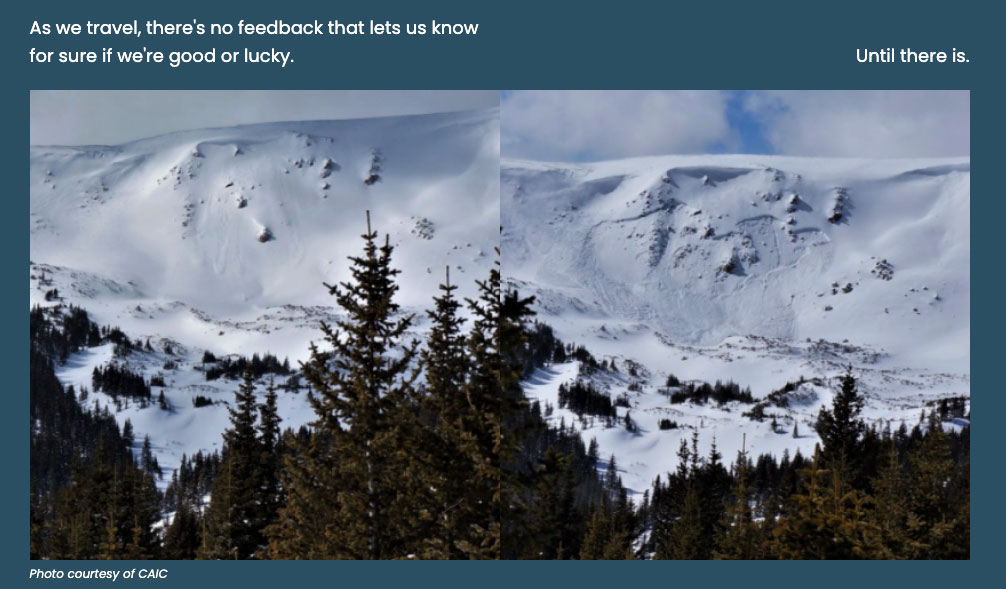A New Platform for Learning From Each Other
As backcountry skiers, our education is never finished. There’s always more to learn, which can feel either daunting or exciting, depending on what side of the bed you wake up on. But when it comes to recreationists just beginning their education, Richard Bothwell, a multi-decade avalanche educator, guide, and the former executive director of AIARE based in Truckee, Calif., saw something that troubled him: Skiers tended to stop their education after taking their first avalanche course.
Just at the point when recreationists should be developing confidence in the backcountry, Bothwell saw them finish the course feeling overwhelmed by both the amount of information they had just absorbed and the lack of a clear next step. Ultimately, he found this led to an ambivalence about seeking out more opportunities for learning.
Then, in 2018, Bothwell met Daniel Feldman when he was a student in one of Bothwell’s AIARE courses. Feldman was committed to furthering his own education, and, as he sought more resources after the course was finished, he corroborated Bothwell’s observations.
“I felt it challenging to progress after my AIARE 1 course,” says Feldman. “It was really daunting to go out there on my own. I felt like there weren’t a lot of resources out there, and I had a hunch that there could maybe be more.”

Richard Bothwell, the former executive director of AIARE, noticed that skiers tended to stop investing in their avalanche education after taking their first course.

Daniel Feldman was a student committed to furthering his backcountry education—and he identified the lack of resources to do so.
Bothwell agreed, and the two got talking about how they could bridge their different backgrounds—Bothwell’s in education and Feldman’s in tech and product design—to solve some of those problems. Later, they brought in Jazmine Kohl—an avid backcountry skier, graphic designer, and product designer in the Lake Tahoe region—to help translate research insights into implementable ideas.
The result is SlabLab, a new research platform designed to study and provide resources to backcountry recreationists and skiers. It’s based around the concept of human-centered design, an approach to problem-solving that involves the human perspective and emotion in all steps of the process, which in this case means talking to backcountry skiers, documenting their stories and experiences, then serving up solutions to address those problems.
Right now, there are two main components to SlabLab’s model. One is their annual report, which shares stories and insights from real backcountry skiers and riders (ranging from pinned IFMGA guides to beginners), analyzing their behavior and habits to inspire reflection and discussion in a relatable and nonjudgmental fashion. The report itself is aimed to inspire new ideas, both for recreationists and professionals, and, in an ideal world, brands and product developers.
The second component, which came directly from information they gathered through the report, is to help connect skiers with compatible touring partners. To that end, last year, they launched events they called speed “dating”—meet-ups to help people find ski partnerships, not romantic partnerships, Bothwell clarifies—in select regions.
In contrast with avalanche education curriculum, the platform they are creating is fairly fluid, using interviews with skiers to drive the direction of their product. “It’s all driven by what the skiers we interview have to say, and where their pain points are,” explains Feldman.
In addition to finding compatible partners, these pain points include intimidation from digesting a high volume of information all at once, cost and logistics of taking avalanche courses, and lack of knowledge about where to go skiing.

Another key issue the report addresses is lack of feedback skiers get after making decisions in the backcountry, which SlabLab has correlated with an increase in risk-taking over the years. The lack of feedback—signals that you are making good or bad decisions—breeds the age-old question, “Were we good or were we lucky?” Sometimes we make a glaring mistake on a ski tour, but we’re lucky enough to get away with it. The snowpack can be fickle that way, and it’s often easy to mistake luck for skill.
SlabLab’s report uses scenarios from real skiers and their habits over time to examine their relationship with risk compared to their skill. They found that recreational skiers who didn’t experience negative feedback—close calls or accidents—gradually upped their levels of acceptable risk over time. That’s not all that surprising, but what Bothwell clarifies is that it’s more than just the snowpack that can contribute to that increasing level of risk.
“We talk a lot about skiing as a ‘wicked learning environment,’ since we don’t get good feedback,” Bothwell says. “But it’s about more than just the snowpack. We’re not getting good feedback about our tours, from our partners, or our decisions. That’s something we believe we can change.”

In the report, SlabLab serves up a few possible solutions for all of these problems, including community building events, debrief kits, short, single lesson snow science courses, and ways to connect skiers with mentorship opportunities. Those ideas are meant to serve as jumping off points, ideas to further the conversation within the greater backcountry community.
Feldman clarifies that SlabLab’s research isn’t meant to be a conclusive evaluation of all skiers— their interviews last year include insights from about 30 skiers and riders, not hundreds of thousands—but a resource to spark conversations and encourage backcountry skiers to examine their own practices and habits. “In no way are we trying to replace education and courses,” says Feldman. “We’re aiming to supplement traditional education by providing more resources and inspiring new ideas and tools for people to take with them in the field.”
Looking forward, Bothwell and Feldman are building out a more robust network of skiers to interview this season as well as scheduling more events.
On the research side, the team’s goal is to continue to gather more data, analyze it, and freely share it with the industry. “As a guide in the avalanche world for many years, this process really gets me excited because it feels like a really fresh way of looking at things,” says Bothwell. “Human-centered design can do a lot for the backcountry community, and I’d love for it to grow in a way that ski companies or curriculum developers can use what we’re doing.”
For recreationists, SlabLab’s report is an engaging way to learn more about the backcountry community, reflect about our own habits, and prompt new conversations with existing and new partners. For industry pros and brands, the team hopes that SlabLab’s work will eventually help influence products, courses, and approaches to mentorship.
While the application may vary, the end goal is always the same: build stronger teams, come home safely, and ski lots of powder.
Lily Krass is a freelance storyteller based in Jackson, Wyoming. Her work has been featured in SKI Magazine, Powder Magazine, Backcountry Magazine, Freeskier, Teton Gravity Research, and Ascent Backcountry Snow Journal, and she has a Professional Level 1 Avalanche Certification. In addition to an all-consuming addiction to powder skiing, Krass takes snacking seriously. She is the co-author of “Beyond Skid: A Cookbook For Ski Bums,” a collection of dirtbag-friendly recipes inspired by life in a mountain town.
Support The Powder Cloud
The Powder Cloud is dedicated to providing you the education and mentorship required to travel safely and find the happiness in the backcountry.
We’d like to ask for your support—for our scrappy editorial team, our wise and experienced contributors and to help us develop new and creative ways to educate all backcountry skiers and riders.
If you are able, please consider supporting us. Thank you and we appreciate you.
Related Posts
Loading...


